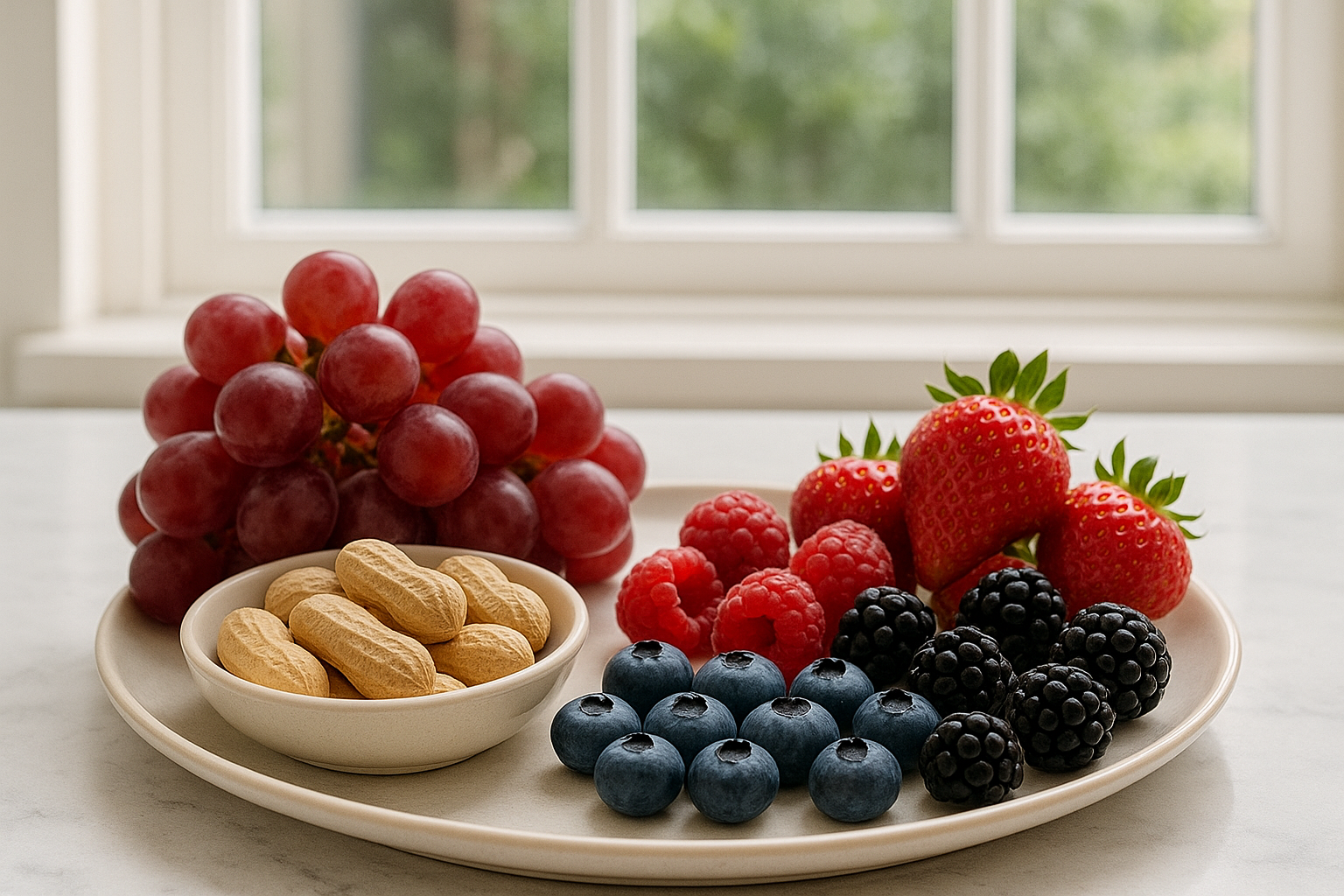Have you ever heard that red wine or grape skins might help protect the heart? Much of that benefit is linked to resveratrol — a natural antioxidant found in certain plants. This compound may support heart health, longevity, and cellular balance. Here are ten foods that could help you include resveratrol naturally in your diet.

1. Red Grapes and Grape Skins
Red and purple grapes are among the richest natural sources of resveratrol, especially in their skins.
- Most of the compound is concentrated in the grape skin, not the pulp.
- Eating grapes with the skin may help increase your antioxidant intake.
- Choose organic grapes when possible to reduce pesticide exposure.
2. Red Wine (in Moderation)
Red wine may provide small amounts of resveratrol due to fermentation with grape skins, but moderation is key.
- Contains less resveratrol than fresh grapes but may still offer mild antioxidant benefits.
- Excessive alcohol intake could offset any positive effects, so balance matters.
- Non-alcoholic grape juice is a gentle alternative.
3. Peanuts
Peanuts and peanut butter naturally contain resveratrol and other polyphenols that may support heart health.
- Raw or lightly roasted peanuts preserve more antioxidants.
- Pairing them with fruits may enhance nutrient synergy.
- Opt for unsalted varieties to avoid excess sodium.
4. Blueberries
Blueberries may not have the highest concentration of resveratrol, but they offer a balanced mix of antioxidants that could support brain and vascular health.
- Also rich in anthocyanins and vitamin C.
- May help protect against oxidative stress related to aging.
5. Cranberries
Cranberries contain small but steady amounts of resveratrol, often enhanced in juice form.
- May help support urinary and digestive balance.
- Choose unsweetened juice to minimize sugar intake.
6. Mulberries
Mulberries provide both resveratrol and vitamin K, potentially supporting circulation and metabolism.
- May help protect cells from oxidative stress.
- Dried mulberries offer convenience with concentrated nutrients.
7. Raspberries
Raspberries may offer gentle resveratrol support along with fiber and ellagic acid, a compound linked to skin health.
- Frozen raspberries retain most of their antioxidants.
- Pairing with yogurt or nuts may balance blood sugar response.
8. Dark Chocolate and Cocoa
High-cocoa dark chocolate may contain traces of resveratrol and other polyphenols that could help protect the cardiovascular system.
- Choose 70% or higher cocoa content for antioxidant value.
- Moderate portions are recommended due to calorie density.
9. Pistachios
Pistachios may provide small amounts of resveratrol along with healthy fats and vitamin B6.
- May help support cholesterol balance when eaten in moderation.
- Unsalted or lightly roasted varieties preserve nutrients better.
10. Red Cabbage
Though not widely known, red cabbage contains both resveratrol and anthocyanins that may contribute to antioxidant protection.
- Cooking lightly may help retain color and polyphenol content.
- Combining with olive oil could enhance absorption.
🌟 Conclusion
Resveratrol may not be a miracle nutrient, but its gentle antioxidant and anti-inflammatory actions could support long-term wellness. By enjoying a colorful mix of grapes, berries, nuts, and vegetables, you may naturally enhance your body’s defense and vitality — one meal at a time.
References and Further Reading
- National Center for Biotechnology Information — Resveratrol and Health Effects
- Harvard Health Publishing — The Role of Polyphenols in Aging
- Journal of Nutritional Biochemistry — Resveratrol in Foods and Human Health
Disclaimer
This article is for informational purposes only and not medical advice. Resveratrol content may vary depending on food type, origin, and processing.
